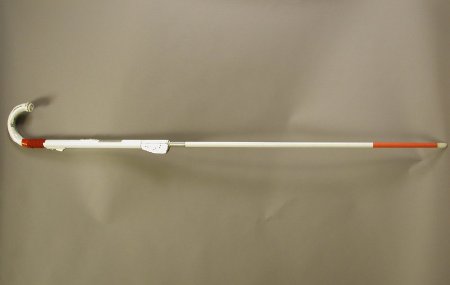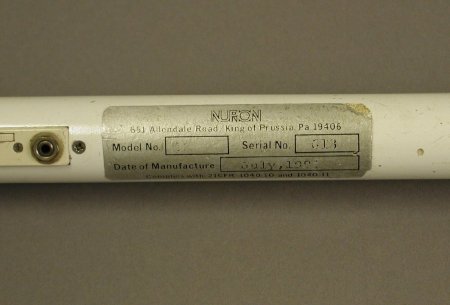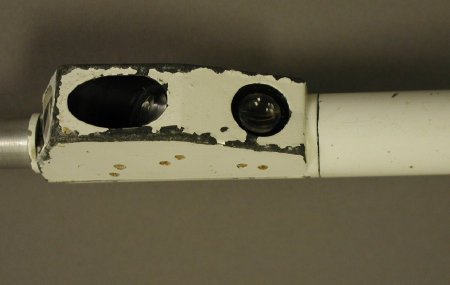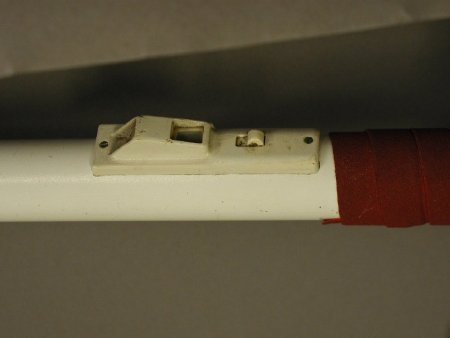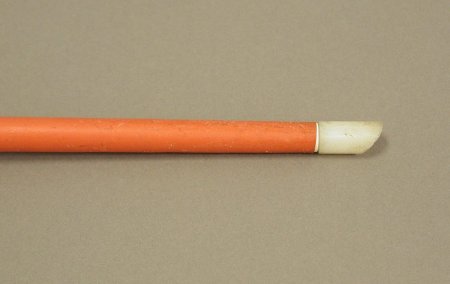Object ID:
2007.33.41
Title:
C-5 Laser Cane
Creator:
Nurion-Raycal
Description:
C-5 laser cane; breaks in half at quick disconnect joint; top half is 1" diameter white enameled crook (3.5" internal diameter, 180 degree turn) with battery compartment in open end, speaker panel in back of crook; base of crook wrapped with red grip tape; white laser unit in front of crook, with three emitters, aimed parallel to cane, 45 degrees to cane, and perpendicular to cane, the down, forward, and up channels; white sliding range switch behind lasers; hole for tactile stimulator and black power switch to right; on bottom of cane is white panel with forward tone switch, volume control, and charging jack; just above quick connect is the receiver unit, three round glass lenses aimed in same direction as the lasers, parallel, 45 degree, and perpendicular; lower half of cane is white enameled 5/8" diameter aluminum tube, 6" of red heat shrink tubing at bottom; friction-fit standard white nylon pencil tip; silver label, "NURION/651 Allendale Road, King of Prussia, Pa. 19406/Model No. G5 Serial No. G13/Date of Manufacture July 1981".
Dimensions:
H-52 W-1.25 D-5.75 inches
Date:
1981
Made by:
Nurion-Raycal
Place of Origin:
King of Prussia, PA
Provenance:
The lasercane evolved in a direct line from Lawrence Cranberg's Signal Corp Sensory Aid to the flashlight detector of J. Malvern Benjamin. By 1966, Benjamin and his colleagues at Bionic Instruments, Inc., had developed the C-3 lasercane, taking advantage of miniaturized components to invent the first true laser cane. The C-4 model was developed later that year. It sent narrow beams ahead of the user to detect obstacles ahead and above the user, and dropoffs below. When detecting an obstacle, the beams would be reflected, and detected by the cane's receivers. Audio signals of different tone sounded when the different detectors were activated. A vibrating pin in the handle was activated only by the forward channel detecting an obstacle. Range was adjustable, between 5-12 feet. Testing of the C-4 resulted in a new model, the C-5 in 1973-74. By 1978, rights to the laser cane belonged to one of the project engineers, Nazir A. Ali, who formed Nurion-Raycal to market and sell the laser cane.
Credit Line:
Gift of Association for Education and Rehabilitation of the Blind and Visually Impaired
